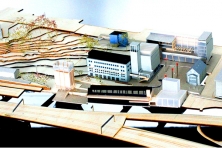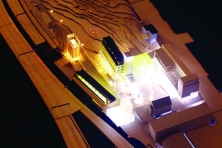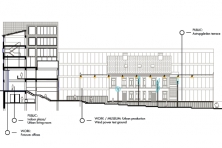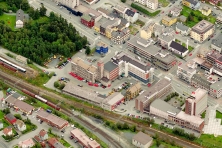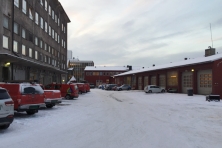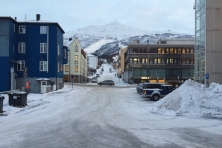The Ecology of Making
Narvik (NO) - Mentionné
DONNÉES DE L’ÉQUIPE
Représentante d’équipe : Dominique Hauderowicz (DK) – architecte
Associé: Kristian Ly Serena (DK) – architecte
Frederiksborgvej 64, DK-2400, Copenhagen NV (DK)
+3345 60082087 – info@studiofountainhead.dk – studiofountainhead.dk
Voir la liste complète des portraits ici
Voir la page du site ici

D. Hauderowicz et K. Ly Serena
INTERVIEW en anglais
Cliquer sur les images pour les agrandir
1. How did you form the team for the competition?
Studio Fountainhead is an established architecture office founded in 2013 by Dominique Hauderowicz and Kristian Ly Serena. We do not believe in large teams and have therefore decided - for the Europan competition as well for our other assignments - to work as a couple. Because we know each other so well, this means, we are working as one mind and not as a team.
2. How do you define the main issue of your project, and how did you answer on this session main topic: the place of productive activities within the city?
With our project for Narvik, Norway, “The Ecology of Making“ we are trying to give our reading of productivity within a present urban community. The proposed architecture is drawn as a direct impression of this set of rather political ideas. We do not see productivity as something that is contained or sustained within a building or any other spatial limitation. Rather, we consider the productive city as a city that allows or contributes to the cultures of making. In our project material we write: “Making doesn´t stop when you leave an office. Making begins in the street: It flowers in conversation and observation. A productive city is a place, that sets one free to seek for moments to thrive. The city must give space and opportunity for this search, allow for one to wander through and talk and settle down. A productive city is not a city of buildings, but a city of spaces for the cultures of making. Making is a process: Productiveness is an eagerness of mind.” This means that working with a productive city means to work with all facets of life, from dwelling to recreation, work and institutions. It is about giving opportunities for playfull, creative lifestyles, that can nourish the kind of research needed for a flourishing business of tomorrow.
3. How did this issue and the questions raised by the site mutation meet?
In our project these principal ideas have met the site specifics. Our primary architectural strategies for the project have been to work with the public space as an integration of the recreational, the workplace, the dwelling and the culture and educational institution into an “Ecology of Making”. This has been achieved through various transformation of existing building volumens, additions of new volumens and landscapes. We have therefore extended the understanding of the building site to also incorporate the adjacent park. Emphasis has been put on the spatial transitions between the various programs and the public space. This has resulted in new public assesses, and a stronger spatial contact between the different actors of the project; all to bring forth a more inspiring and catching urban atmosphere.
4. Have you treated this issue previously? What were the reference projects that inspired yours?
Europan 14 is the first time we draw specifically for “the productive city”, though many ideas and thoughts resonate within the body of projects that we have developed throughout the past four years.
5. Urban-architectural projects like the ones in Europan can only be implemented together with the actors through a negotiated process and in time. How did you consider this issue in your project?
Because the actual program - who would inhabit what in the project - was very unclear in the project brief, and very much but out for discussion, we decided to draw the project so that it is easily adaptable for a long-time implementation process. Each of our transformations or additions can therefore be altered without harming the overall architectural idea of the project.
6. Is it the first time you have been awarded a prize at Europan? How could this help you in your professional career?
This is our second time participating in Europan. We both got awarded a prize in this and the previous round, where we got a 2° prize for the large scale harbour renewal project “More Tronheim” in Trondheim, Norway.
